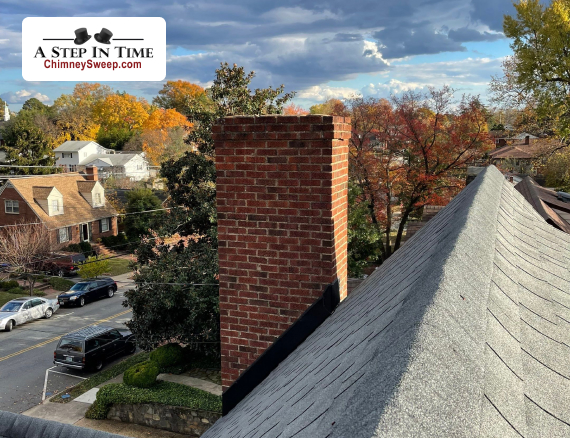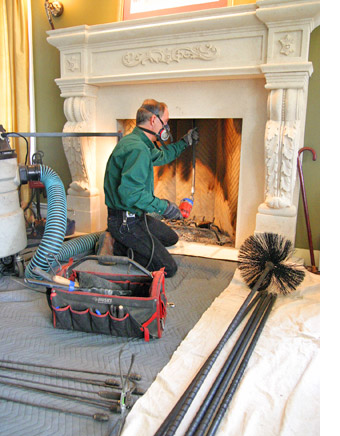Chimney Clean San Jose Providers: Your Relied On Companion for a Safer Home
Chimney Clean San Jose Providers: Your Relied On Companion for a Safer Home
Blog Article
Chimney Cleaning: A Step-by-Step Overview to Preserving a Healthy Fireplace
Regular smokeshaft cleansing is a vital component of this upkeep regimen. By complying with these standards, you will certainly find out how to collect the essential tools, carry out a visual assessment, clear particles and build-up, sweep the chimney, and finish the last steps for ongoing upkeep.
Gathering the Necessary Tools
To begin the process of chimney cleaning, the initial step is to gather all the needed devices. Having the right devices available ensures a secure and efficient cleaning procedure. The necessary devices for smokeshaft cleaning include a chimney brush, a ladder, drop towels or plastic sheets, a flashlight, handwear covers, and a dust mask.
The smokeshaft brush is the main device utilized to remove residue and creosote accumulation from the flue. It is essential to choose a brush that matches the shapes and size of your smokeshaft. Additionally, a sturdy ladder is needed to access the chimney securely. See to it the ladder is secure and positioned on a level surface.
Decline fabrics or plastic sheets are important for securing the surrounding location from dust and debris. They aid make and have the mess clean-up less complicated. A flashlight is crucial for inspecting the smokeshaft's interior for any indicators of damages or blockages. Handwear covers are essential to safeguard your hands from residue and other hazardous materials, while a dirt mask aids prevent the breathing of debris.
Doing a Visual Examination

Utilizing a flashlight, very carefully analyze the indoor walls of the smokeshaft for any type of indicators of damage, such as splits, loose bricks, or mortar damage. These problems can compromise the chimney's architectural honesty and present a severe safety risk. In addition, check for any signs of water damage, such as discoloration or efflorescence, as this can suggest a leaky chimney cap or blinking.
Following, check the smokeshaft flue for any blockages. Look for the presence of nesting materials, leaves, or particles that might have collected over time (Chimney Sweep San Jose). These obstructions can limit air movement, raise the danger of carbon monoxide build-up, and hinder the chimney's capability to properly vent smoke
Throughout the aesthetic inspection, pay attention to the chimney crown, which is the leading surface area that secures the smokeshaft from dampness. Try to find fractures or missing items in the crown, as these can permit water to get in the chimney and trigger considerable damage.
Clearing Up Debris and Accumulation
After completing the visual inspection, the following action in chimney cleansing entails clearing particles and accumulation to make certain the proper functioning of the fireplace. Over time, particles such as leaves, branches, and pet nests can accumulate in the smokeshaft, blocking the circulation of air and causing prospective fire threats.
A smokeshaft brush, particularly designed for this purpose, is made use of to eliminate loosened debris and creosote from the chimney wall surfaces. It is essential to choose a brush that matches the dimension of your smokeshaft to make sure reliable cleansing.
To start, insert the brush into the chimney and move it up and down, scrubbing the wall surfaces to dislodge any kind of debris or creosote. Make use of a sweeping activity to guarantee detailed cleansing. It is suggested to begin from the bottom and function your method up. Once the brushing is full, use a vacuum cleaner or a smokeshaft brush expansion to eliminate the dislodged debris from the fireplace.

Brushing Up the Smokeshaft
The sweeping of the smokeshaft is a vital step in preserving a healthy fire place. Gradually, residue, creosote, and other debris can gather in the smokeshaft, blocking the flow of air and potentially triggering an unsafe accumulation of combustible materials. Routine smokeshaft sweeping not only guarantees correct air flow yet likewise protects against the danger of chimney fires.
When it comes to smokeshaft sweeping, it is extremely suggested to hire a specialist smokeshaft sweep. These experts have the understanding and tools needed to safely and effectively remove the collected particles from your smokeshaft.
It is necessary to keep in mind that the frequency of smokeshaft sweeping depends on several elements, such as the kind of fuel utilized, the quantity of use, and the kind of chimney. As a basic general rule, it is recommended to have your chimney checked and swept a minimum of yearly.
Final Actions and Maintenance
After completing the chimney sweeping procedure, the initial step in the final maintenance is to inspect the smokeshaft cap and spark arrestor. These elements prevent debris, pets, and rainwater from getting in the chimney.

Evaluate the within the fire place for any type of indicators of degeneration, such as fractures, loose blocks, or harmed mortar. These concerns can impact the structural integrity and safety of the fireplace. If any issues are helpful hints spotted, seek advice from a specialist chimney sweeper or mason to resolve them quickly.
Finally, take into consideration mounting carbon monoxide gas detectors near the fireplace and throughout your home. These tools can find the existence of this unsafe gas, supplying an early caution system in situation of a chimney breakdown. Consistently check and replace the batteries in these detectors to ensure their performance.
Conclusion
Finally, adhering to a step-by-step guide for chimney cleaning is essential in maintaining a healthy fire place. By collecting the required tools, executing an aesthetic inspection, clearing particles and additional info build-up, and sweeping the chimney, property owners can make sure the safety and security and effectiveness of their fireplace. Normal upkeep and cleaning will help avoid smokeshaft fires and enhance air quality in the home. It is vital to focus on chimney cleansing as a part of total home maintenance.
The essential devices for smokeshaft cleaning include a smokeshaft brush, a ladder, decrease fabrics or plastic sheets, a flashlight, gloves, and a dust mask.
A smokeshaft brush, especially designed for this function, is utilized to eliminate loose debris and creosote from the smokeshaft wall surfaces. Normal smokeshaft sweeping not just guarantees correct ventilation yet likewise prevents the danger of chimney fires.
When it comes to chimney sweeping, it is extremely recommended to employ a specialist smokeshaft sweep. After completing the chimney sweeping procedure, the initial step in the last maintenance is to examine the smokeshaft cap and trigger click this link arrestor.
Report this page